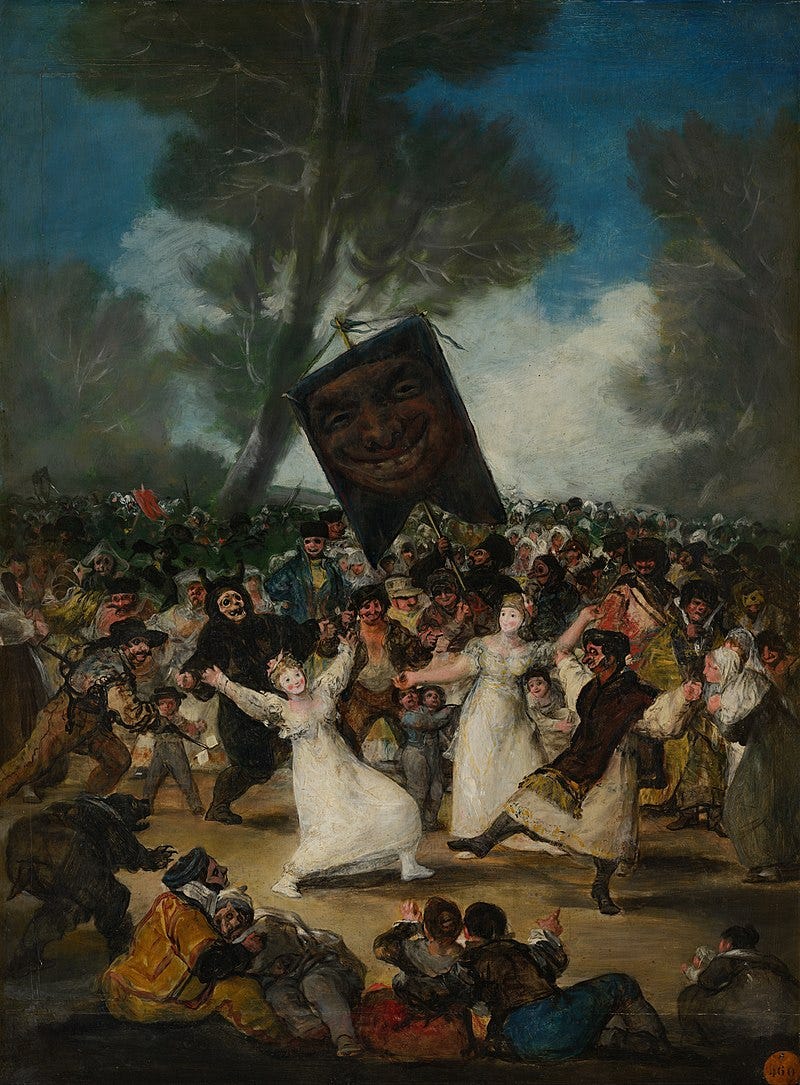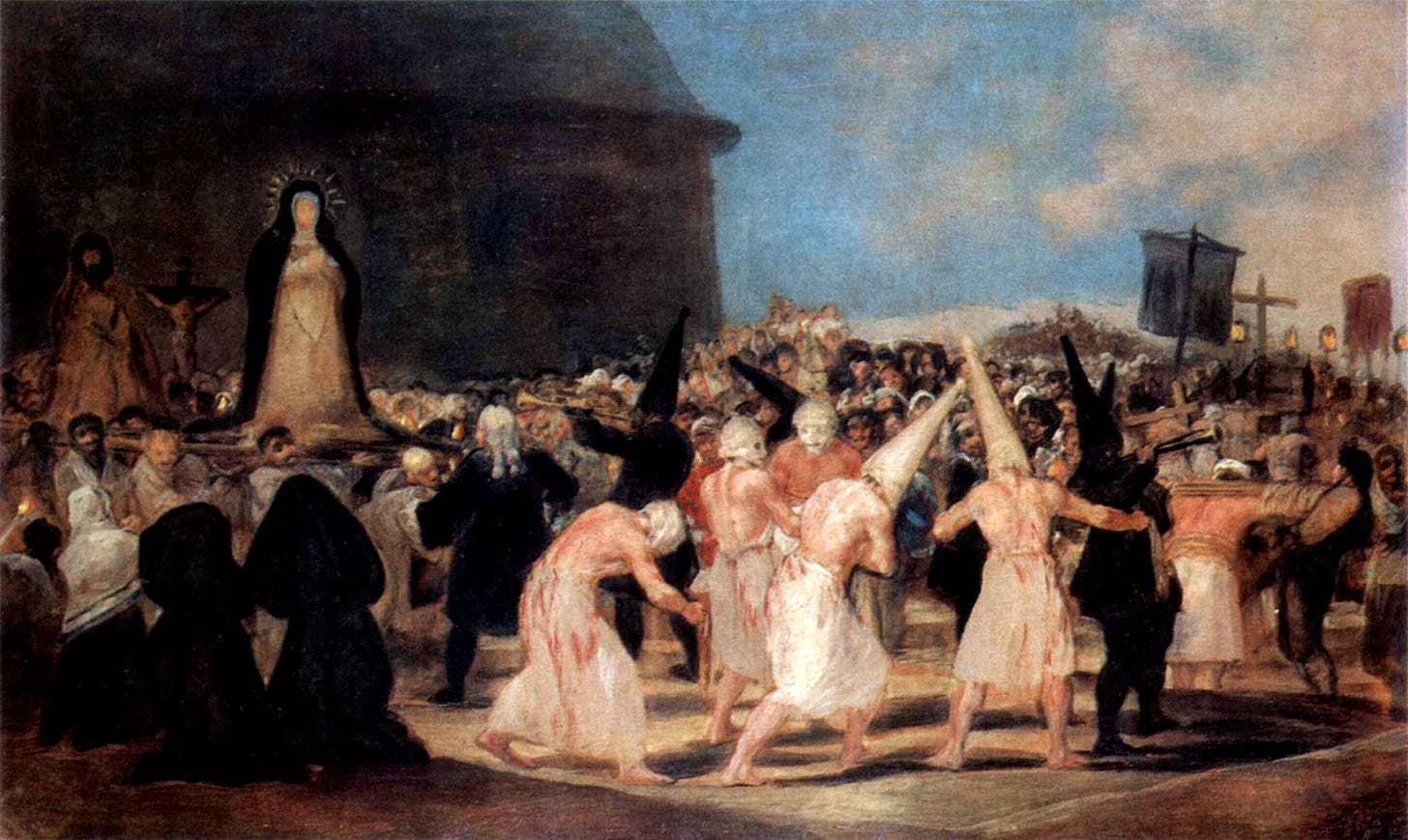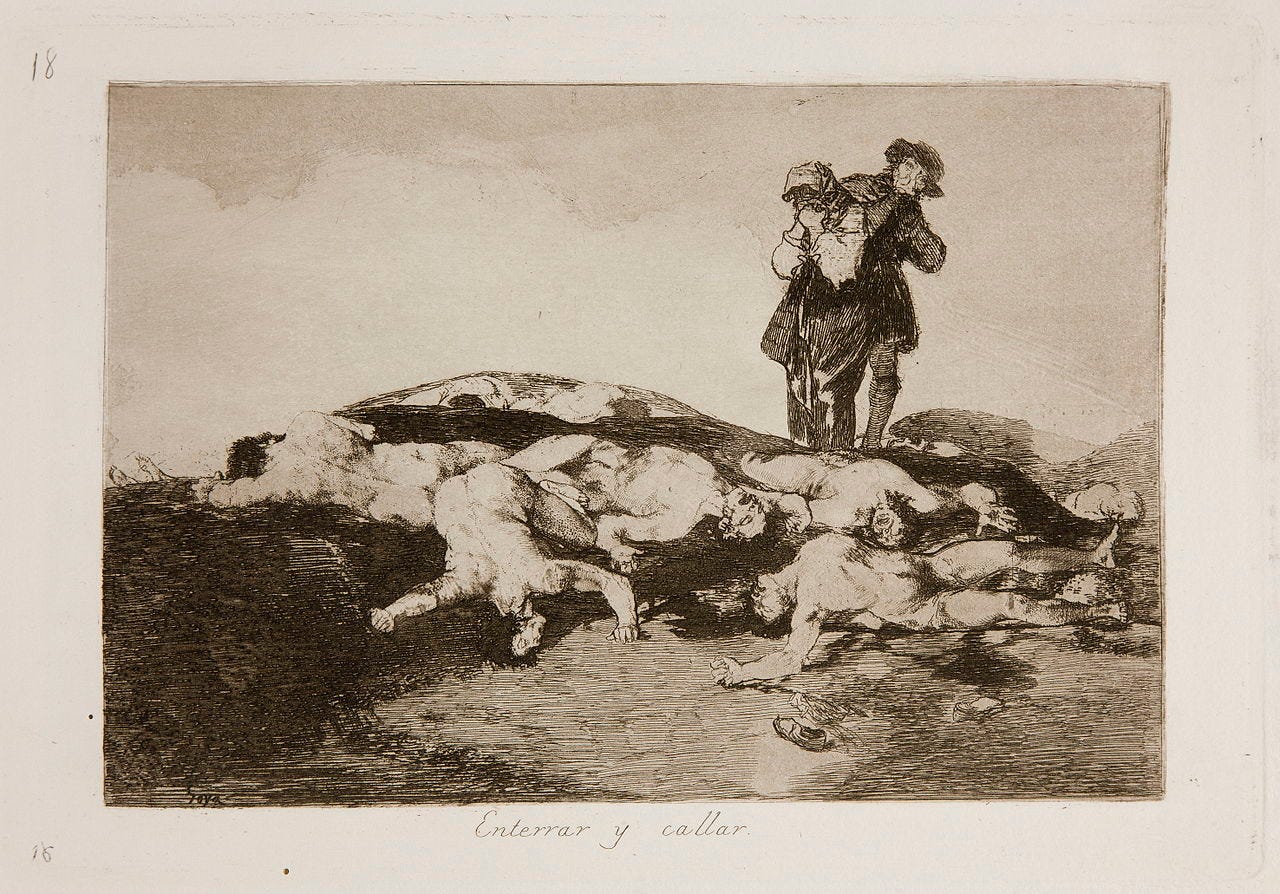The Burial of the Sardine - Francisco de Goya
From an unknown origin to a praised satirical masterpiece.
Many dancing characters, a banner representing a large smiling face, masks with sinister smiles or blank expressions, a cloudy and dark sky… Welcome to ‘The Burial of the Sardine’, a joyful tradition in Spain and Latin America, and a somehow distressing celebration under the brushstrokes of Francisco de Goya (1746 - 1828).

The Carnival scene
The title of the painting refers to the culminating event of a three-day carnival ending on Ash Wednesday. ‘The Burial of the Sardine’ symbolizes the end of Carnival and the beginning of Lent. The tradition consists of a mock funeral procession where a sardine, either real or symbolic, is buried or burned.
Despite the apparent standardized customs, the exact origins of this tradition remain unclear, but it is believed to date back to the mid-18th century. Many stories (legends?) exist in order to explain the birth of this tradition:
In Madrid, it was a tradition to bury a pig cut in half, called a "cerdina" at the beginning of the Lenten fast. This tradition then spread to the rest of Spain, hence the confusion with the word "sardina";
Carlos III, king of Spain between 1759 and 1788, would have decided to distribute fish to his people for Lent as a kind gesture. By the time the fish arrived, they would have gone bad, leaving the authorities no other choice than burying the shipment;
A group of students decided to form a procession led by a sardine symbolizing fasting and abstinence, to revive the party that took place during Carnival. People enjoyed it so much that they decided to recreate the procession the following year;
It was a replacement for a former tradition protesting against the religion regarding fasting. People would dress up as religious authorities and would bury sardines to show their disapproval of fasting.
Whichever story is true (or your preferred one), the tradition then spread throughout the Hispanic world and now marks the end of Carnival. It represents the end of the past and the excesses of Carnival and reminds everyone that they should respect the rules of the Lenten fast. This is also the start of a period favorable to renewal and transformation, supported by the religion to purge the vices.
Goya depicted this event with a crowd of masked and disguised revelers celebrating the burial on the banks of the Manzanares river, which crosses Madrid. The disturbing smiling face on the flag is the “King of the Carnival”, and was used by Goya to replace the word mortus (death) originally painted. All these elements, along with all the diverse worrying faces and dark tones, add to the unsettling mood.
The composition has frequently been compared to other paintings by Goya executed at the same time, including ‘A Procession of Flagellants’, awhich also shares the theme of religious ceremonies, though the latter was part of a critical series of what was adverse to the philosophy of the Enlightenment in Spain at that time:

The Flagellants were traveling groups of faithful people who disciplined each other collectively in public. The cruelty of the scene is highlighted by the light shed on the Flagellants, whose blood contrasts with their pale skin and white clothes.
Significance in the post-Napoleonic Spain
A few clues indicate that ‘The Burial of the Sardine’ may also convey a political message.
After spending the Peninsular War as a prisoner, King Ferdinand VII returned to the throne in 1814 after the rout of the Napoleonic armies. Despite his popularity, he quickly revealed himself to be an absolutist king and was considered a traitor to the Constitution, by prosecuting liberals. A military coup tried to overthrow him in 1820, as the country was economically and politically devastated, but he remained at power until his death in 1833. Because of his character and his management of the country's affairs, he is frequently considered the worst ruler of modern Spain.
‘The Burial of the Sardine’ took place in this gloomy context, and marked a transition in Goya’s works, from more colorful to his later, darker “Black Paintings”. Yet Goya had already started criticizing his time, working since 1810 on ‘The Disasters of the War’, a series of 82 prints denouncing the cruels acts of the war.
‘The Burial of the Sardine’ is a tribute to the common people, capturing the chaotic and exuberant spirit of the festival while also hinting at the darker aspects of mass hysteria. The initial satyre was disguised by Goya, as many characters were first portrayed as religious but changed by fear of the Inquisition. Goya was already the target of the Inquisition because of ‘La Maja Desnuda’, a nude portrait with no iconographic justification.
(Goya was acquitted thanks to the influence of a powerful, unidentified friend.)
Yet, if ‘The Burial’ is a manifesto of the joy of living of the people, which contrasts with all the recent macabre or critical series about the Spanish societal evolution of the time (the disasters of war, bullfighting, Inquisition…), it is also a vivid transgressive act showing - subtly - his rejection of the authoritarian policies of Ferdinand VII.
Although Carnival remained permitted under the French domination, Ferdinand VII prohibited its expansion due to the excesses and the mockery directed towards the institutions. The repression did not have much effect in comparison of the people’s lust for life.
The message here is about lower classes able to enjoying freedom and expressing themselves without restrictions, in accordance with the Enlightenment ideas to which Goya was close.
After the independence war and during one of the darkest times Spain has gone through, Goya's masterful brushwork and the emotional intensity of the figures make this painting a standout example of his ability to blend social commentary with artistic mastery.





